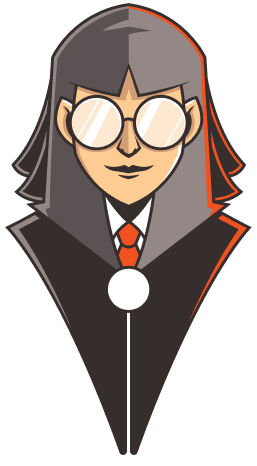Aloha, geek squad!
Here at The Geeky Pen, we try to do more than just translate games. We also want to facilitate networking, and introduce you to other talented freelancers in the board game industry. Today, we’re putting a graphic designer in the spotlight who has worked with us on creating the Dutch, French and German rulebooks for Stroganov.
Hanna Björkman is from Sweden. She has a bachelor’s degree in Graphic Design & Communication and a passion for board games. Through her company We are Knytt she creates graphic design for board games in the hopes of helping gamers to intuitively understand the rules and gameplay. She specializes in rulebooks, for which she does both layout and text editing, but she also designs cards and other components.

We had a little chat with her about her love for graphic design and the career she’s built for herself in the tabletop gaming industry so far.
TGP: First off, where does the name Weareknytt come from?
HB: Knytt has been my personal nickname for ages. I mostly don’t even respond to Hanna anymore at this point. I’m so used to being called Knytt that it takes a moment to realize someone’s trying to talk to me when they call me Hanna.
The “We are” portion of the name comes from me starting the company on my own, when usually there are at least a couple of people involved in this kind of business. So basically I have to take on a lot of different roles, and sort of act like a group even though I’m on my own.

TGP: Where did your passion for graphic design originate from?
HB: I’ve always been a creative person. I’ve been drawing since I was little, got into photography as well as sewing early in life too, and I think the first logo I designed was when I was trying to turn photography into a side business while I was in school.
Over time, I’ve learned that it’s even more important, at least for me, to create things that are easy to understand and that convey the correct meaning, than it is to make something that’s just ‘pretty’. I started to apply what I know about graphic design to board games, and became passionate about helping players learn and understand game mechanisms more easily.
TGP: Did you play many games as a kid?
HB: Oh, I definitely did! I have an older brother who introduced me to a lot of games when I was growing up. I think Carcassonne and Ticket to Ride were some of the first games that made me fall in love with board games.
TGP: Most of us started out with the classics! My gateway games were Catan and Citadels. How did your passion for board games evolve as you got older?
HB: My brother kept introducing me to more and more complex games, and later I started going to board game conventions. I met my significant other at one of those, and when we moved in together we really started collecting board games. Now, we have more than 100 games in our collection.
TGP: Impressive! We’ll definitely circle back to that later. But let’s keep going. Tell me about the moment you decided you were going to pursue a career in the board game industry.
HB: While I was pursuing my bachelor’s degree in Graphic Design & Communication, I started talking to a local board game publisher at a board game convention and mentioned my studies. They ended up hiring me to create a rulebook for my bachelor’s thesis. The game was released recently: it’s called Curators.

While I was working on that, another local publisher reached out and wanted me to create their rulebook once I had finished my studies. That’s when I decided to really try and go for it.
TGP: What are some of the most memorable or exciting projects you’ve worked on so far?
HB: Funnily enough, my absolute favorite project is not even a graphic design project. Instead it’s a rules editing project for Whirling Witchcraft, an upcoming game published by AEG.
You might think the exciting part is because it’s for such a well-known publisher, but to be honest I was more excited because it’s a game I played while it was still in its prototype stage.
I got to know the designer, Erik Andersson Sundén, at a board game convention and fell in love with the game immediately. We kept in touch, and when AEG picked up his game he suggested they hire me to edit the rules. It was such a great experience to work on a game you genuinely loved even before you were approached to work on it.
I will also always have special place in my heart for the Curators rulebook. Not only because it was the first board game project I was a part of, but also because of the praise the rulebook received in a board game design contest.
TGP: What’s one project you wish you could have worked on or contributed to?
HB: Lost Ruins of Arnak. It’s such a beautiful game with a lot of intricate little rule details that are made clearer through the graphic design of the components. I also love that the rulebook is designed to fit with the game thematically. It’s designed to look like a journal, and the thematic text sections are journal entries (with the day corresponding to the page the text is on, which is a really neat detail).
TGP: Where do you find the inspiration for your art style?
HB: For my graphic design I look a lot at board games that were already published, but I try not to be restrained by what’s already out there. That’s why I analyze the graphic design of board games on my Instagram, to challenge myself to figure out what is well designed and what could be made better.
TGP: Speaking of things that could be done better: what would you say are the required elements for a well-structured rulebook?
HB: Fist of all, you need the text to be presented in a good order:
1. Introduction
2. Objective
3. Setup
4. How to play
5. Game end
However, you have to take into account what the rulebook of a given game needs, and adjust accordingly. This is especially true for the ‘How to Play’ section, where the order has to be adapted individually for each game.
For example, the rules in Whirling Witchcraft don’t even have a separate ‘End of Game’ section, because checking for victory is a step in the middle of the round. Therefore, the end of game information makes the most sense in the middle of that section.
To accompany the text you need lots of images that show what the text is trying to convey. Examples are also very important to make sure players understand the rules correctly. I also like to color code sections to make it easier for players to look up specific rules during a game.
TGP: What’s your all-time board game top 3?
HB: Everdell, Lost Ruins of Arnak, and Terraforming Mars.
TGP: Lastly, where can people find you on the internet?
HB: On my website at weareknytt.com, and on my Instagram @weareknytt.


